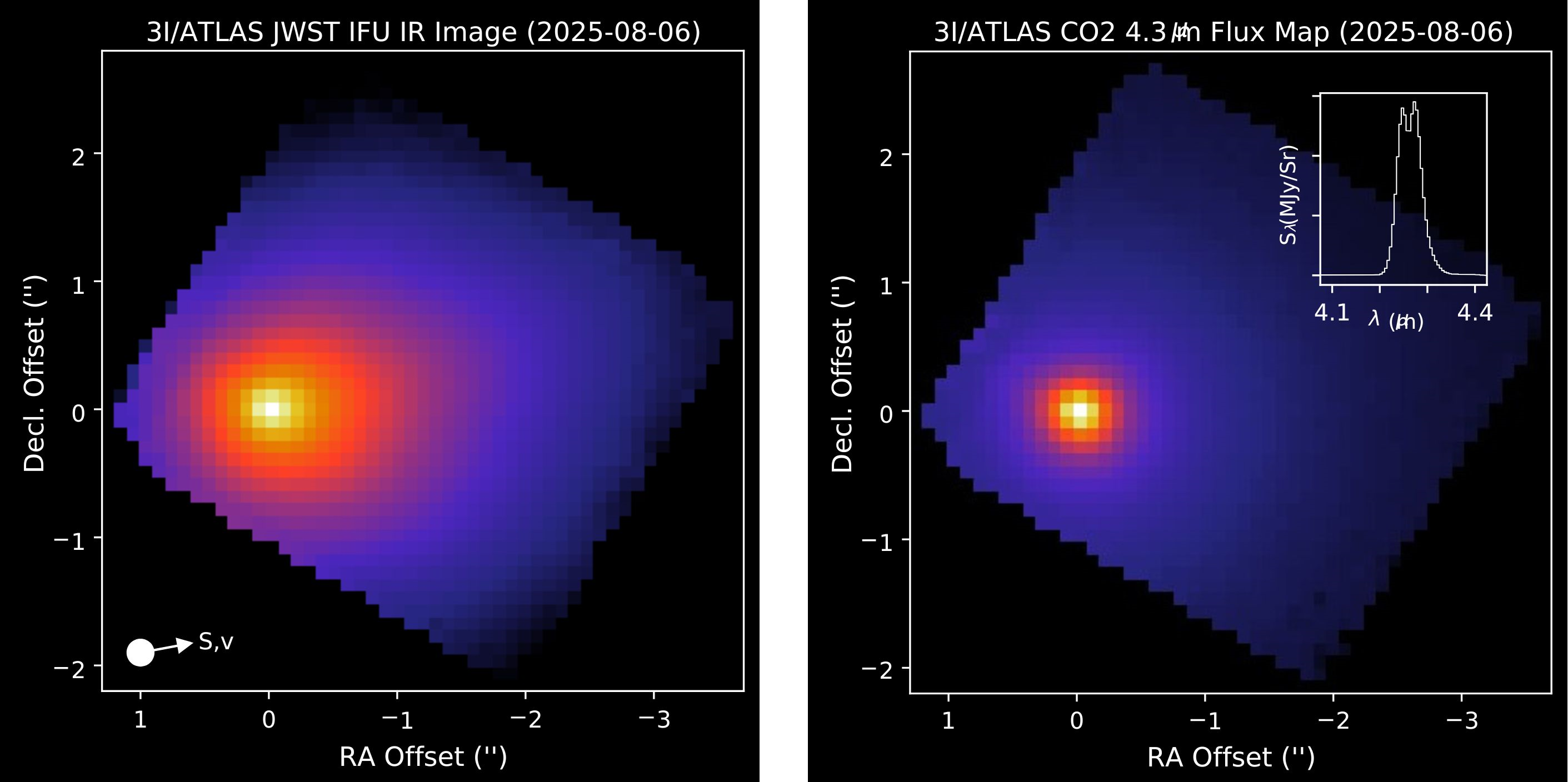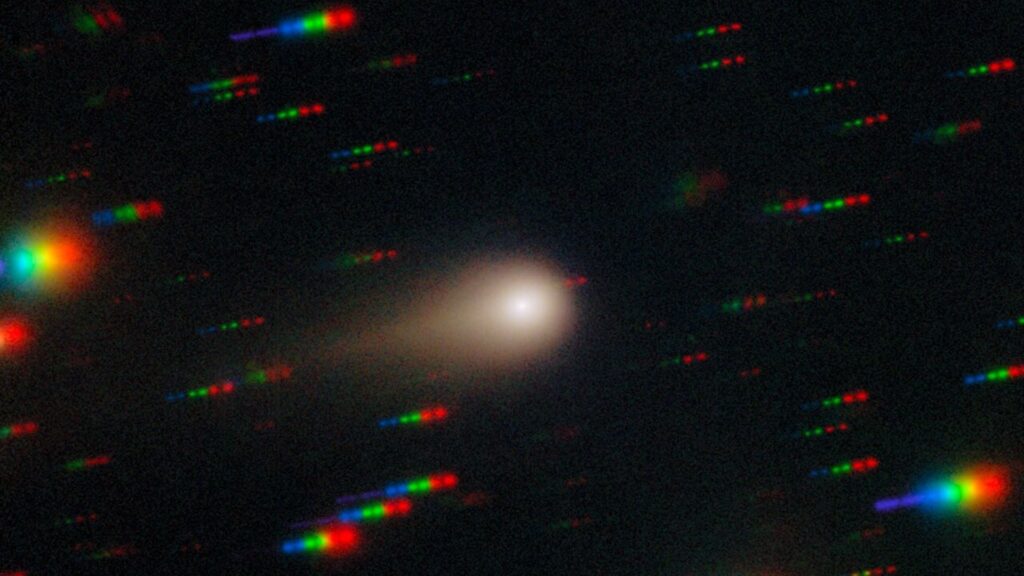A new study using observations from the James Webb Space Telescope (JWST) reveals that comet 3I/ATLAS is extremely irradiated by billions of years of cosmic ray bombardment.
The comet absorbed so much galactic cosmic rays during its interstellar journey through the Milky Way that it developed a deep irradiated crust that no longer resembles the material of its home star system, a new study suggests.
you may like
Galactic cosmic rays (a type of cosmic radiation consisting of high-energy particles from outside the solar system) collide with carbon monoxide (CO) in space, converting it to carbon dioxide (CO2). In our solar system, the heliosphere, a giant bubble of radiation emitted by the sun, protects Earth and its neighboring regions from most of this cosmic radiation. But in interstellar space, where 3I/ATLAS spent most of its life, no such protection exists.
The authors of the new study concluded that over billions of years, cosmic rays significantly altered the physical conditions of Comet 3I/ATLAS’s ice to depths of about 50 to 65 feet (15 to 20 meters).
“It has a very slow but very powerful effect over billions of years,” study lead author Romain Maggiolo, a research scientist at the Royal Belgian Institute for Astronautics, told Live Science.
The discovery, described by the researchers as a “paradigm shift” in the study of interstellar objects, suggests that objects like comet 3I/ATLAS are composed primarily of material processed by galactic cosmic rays, rather than the pure material representative of the environment in which they formed.
In other words, comet 3I/ATLAS is more a product of interstellar travel than of any origin, at least outwardly.
Tracking interstellar visitors
Comet 3I/ATLAS is currently flying around the sun. The comet reached perihelion (the point closest to our star) on Thursday (October 29). As the comet approaches the star, it heats up, causing the ice on its surface to sublimate and turn into gas. The new discovery suggests that the gas ejected from the comet before perihelion was simply from its irradiated outer shell. This is likely to continue after perihelion, but Maggiolo noted that, although unlikely, the sun’s erosion could be strong enough to expose the original material of the comet’s home star that is trapped within the comet’s core.
“It would be very interesting to compare the pre-perihelion observations, the first observations when it arrived in the solar system, with the observations made after perihelion, when there was erosion,” Maggiolo said. “Perhaps looking at these differences will give us some hints about its early composition.”
you may like
Since its discovery in July, researchers have used a variety of telescopes to learn all they can about 3I/ATLAS. Their findings so far indicate that the comet is moving through the solar system at speeds exceeding 130,000 miles per hour (210,000 kilometers per hour) in an unusually flat and straight orbit. 3I/ATLAS may also be the oldest comet ever observed, with one study suggesting it is about 3 billion years older than our 4.6 billion year old solar system.

The new study builds on previous work documenting that Comet 3I/ATLAS is rich in CO2, based on the first images of the interstellar visitor taken by JWST in August and observations from NASA’s SPHEREx orbiter, also taken in August.
Maggiolo and his colleagues have been studying the illumination of a domestic comet (Comet 67P) that passes between the orbits of Jupiter and Earth, and modified the model from a 2020 study published in Astrophysical Journal Letters to apply to Comet 3I/ATLAS.
The research team modeled the cumulative effects of galactic cosmic ray exposure on both the structure and chemical composition of the ice after 1 billion years of irradiation. This method relies on laboratory experiments that simulate the effects of galactic cosmic rays, so it may not be completely representative of interstellar conditions. Nevertheless, the study says the experiment provides a solid indication that comets experience lonely journeys through interstellar space that span billions of years.
Simulations show that 1 billion years of irradiation is sufficient for comet 3I/ATLAS to form a deep irradiated crust. Maggiolo noted that comet 3I/ATLAS still has a lot of interesting information, but it’s getting older and changing, and researchers need to take that into account during analysis.
“It requires more work for scientists, because we need to carefully consider the aging process, but [3I/ATLAS] It continues to be very interesting,” Maggiolo said.
Source link

